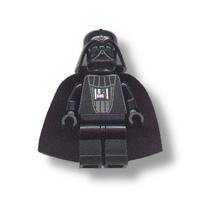 A confession. I’ve gone over to the dark side.
A confession. I’ve gone over to the dark side.
No, I’m not using Windows again – it’s not that bad. But I have started doing something which, until fairly recently, I considered far from commendable.
Yes, you’ve guessed it. I’ve started sending HTML-formatted email.
I used to be a purist. Email was for textual communication, and didn’t need frivolous formatting, so all my email programs were told in no uncertain terms that outgoing email should be plain text only. There were all those nasty privacy and security issues, especially in early versions of Outlook and Outlook Express. Javascript and ActiveX could be embedded in messages, exploiting security holes in the receiving mail program. Senders could include an image in an email which would be loaded when the message was viewed, meaning they could detect whether you’ve looked at it or not! Shocking, eh?
Well, maybe, but the security holes have largely been fixed, spam filters take out most of the stuff I would have worried about, notification systems are decidedly fallible and most email clients let you switch all these features off if you’re still concerned.
I really have no desire to change my background colours or embed YouTube videos in my messages. But in the end I decided that in the 21st century it was just plain silly not to be able to write sub-headings in bold or emphasise things with italics.
I was being a luddite. I was effectively insisting that all letters should be word-processed in a monospaced font because that had been good enough for typewriters. That wasn’t the way to make progress. I was using more sophisticated formatting in my instant messaging than in my carefully-composed emails! Yes, there are some potential issues, but denying myself from using italics was not the way to get those issues fixed. Anyway, the rest of the world was ignoring people like me. I’ve been getting an awful lot of formatted emails for an awfully long time, and never had any problems.
Actually, I would have made the switch earlier, but it’s only with the latest (Leopard) version that Apple’s Mail app – which I rather like – has really adopted HTML as its standard formatting – before that it could happily display incoming HTML but used richtext for outgoing compositions; something that not all other programs could read very well. Fortunately, any well-behaved email program will send a plain-text version of any message alongside a formatted one, so the important text should still get through.
Which means that if you wish to read my emails as if they came off a typewriter, you can still do so. I’m afraid neither the presence nor the absence of formatting is likely to improve the content!
After moving to OS X as my workstation OS a year ago (from Linux and because of my job) I’ve done the same. However, before reading your post I’d not fully realised I’d done so! Just 4 years ago I was using Pine as my main mail client, then Evolution, and now Mail.app. Small usage of HTML does enable emails to be a lot more readable. Also as a biologist making sure that something I format as fixed width STAYS fixed width when the recipient is reading it, makes sending DNA sequences examples in your email a lot simpler.
One other thing Mac users often don’t realise is that Windows mail programs are not very good, in general, at embedding attachments in the text. Images are generally OK but everything else appears at the bottom of the message.
It’s easy to create messages on a Mac which say, for example:
If the recipient has Apple Mail this will work fine, but other systems will tend just to group all attachments at the end of the message. In the worst cases, the text between attachments just becomes a text file attachment too.
So I always advise people to stick attachments at the end unless you know your recipient’s system well.
You could always use plaintext tags (aka “structured words”) if you want to mark up text in a plain text email. I don’t know whether any Apple mail apps support this but it’s something that has been around in Unix-based apps for years and even exists in the Windows version of Mozilla Thunderbird.
Examples:
*bold* displays text as bold text.
/italic/ will render as italic text.
_underscore_ gives you underscored text.
|code| displays in a fixed width typeface.
You get the benefits of HTML mark-up without the many downsides.
Earlier versions of Windows Mail or Outlook I used before XP would embed attachments in the location of your choice, but these days Outlook shows them all at the top between the subject and the body.